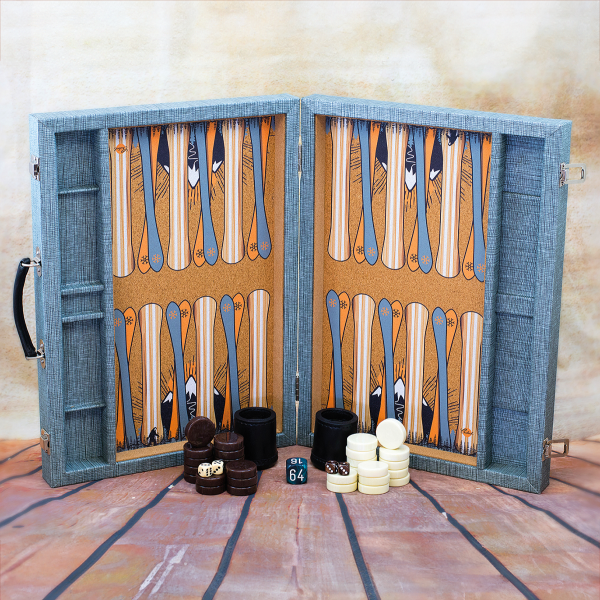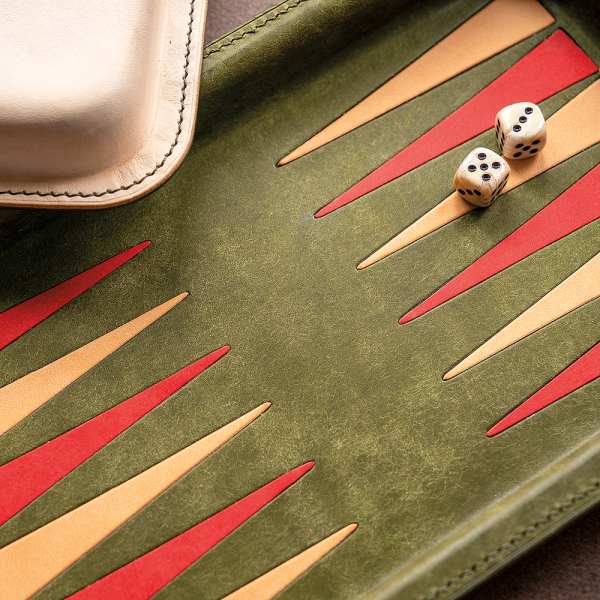On Board
On Board
Caruso believes his game boards enhance people’s lives. “They are bringing families together,” he says. “I get a lot of satisfaction from that.”
An ancient game whose origins are believed to stretch back 5,000 years, backgammon involves a board with 24 triangle-shaped points. It is for two players, who each have 15 playing pieces that look like checkers. The object of the game is to move those pieces to your home corner of the board, where you “bear them off,” or remove them from play. It involves strategy and, because your options are determined by a roll of the dice, a lot of luck.
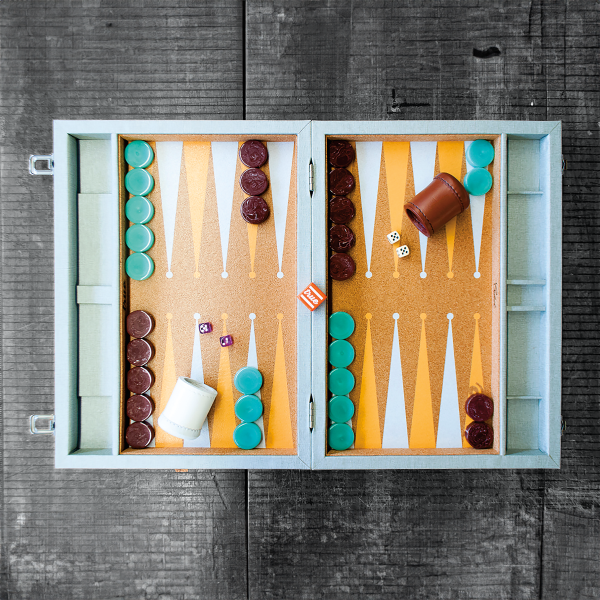
The True x Crisloid backgammon set has checkers with contrasting colors, representing battles “between art and science, discipline and instinct, method and whimsy.” Photo courtesy of the Crisloid company.
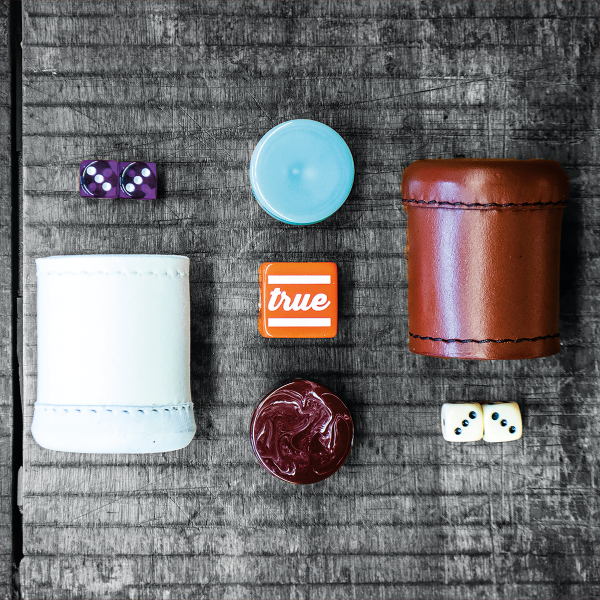
When making True x Crisloid, employees at the Crisloid company wrapped dice cups in leather. Photo courtesy of the manufacturer.
Bringing People Together
The communal nature of the game resonates deeply with Alexandra Llewellyn, whose eponymous company is known internationally for bespoke backgammon sets. When she was 9 years old, Llewellyn visited her step-grandfather in Cairo and learned to play the game from an elderly local. They didn’t speak the same language but could still enjoy each other’s company because the rules of the game transcended words. “When you’re playing a game with someone, it’s such an incredible interaction,” she says, speaking over Zoom from her company’s London studio. “It’s a sort of different kind of conversation that you have.”
Llewellyn employs artisans across England, in disciplines that include leather making, cabinetry, silversmithing, stone cutting, and engraving. Her boards are especially known for their intricate marquetry—designs of inlaid wood of different colors and textures—made by British artist Joe Geoghegan. The only game pieces the company doesn’t make are the dice, which are precision-cut casino quality and have to be perfectly weighted.

A detail of Alexandra Llewellyn’s Midnight backgammon set, which features intricate marquetry and stars made from mother of pearl. Photo courtesy of Llewellyn.

Midnight was inspired by the beaches of Miami and Los Angeles. Photo courtesy of Llewellyn.
The company sells sets on their website, each designed by Llewellyn. One is a midnight scene inspired by the beaches of Miami and Los Angeles, with marquetry made from sustainable sycamore, bird’s-eye maple, and satin walnut. The points are in the shape of palm trees, and the playing surface is dotted with stars made from mother of pearl. The playing pieces are malachite and tiger’s eye and encased in gunmetal brass.
Alexandra Llewellyn also produces custom sets, each taking approximately four months to complete. Llewellyn estimates that she has made more than 400 commissioned sets since starting the company in 2010. “A bespoke client puts so much trust in my hands to translate their passions and vision into the different materials,” she says. ”That’s a rather magical moment.”
Inspirations in Wood and Leather
California artist and woodworker David Levy wasn’t drawn to the game itself when he started making backgammon sets. Rather it was the creative challenge of building the boards out of solid wood that appealed to him. Levy grew up in the pine forests of New Mexico, where he worked at a logging camp during the summer. He says those early experiences with wood became more formalized when he studied design at University of California, Davis. He started his woodworking career in the 1970s making kitchen products, including cutting boards and knife blocks. In the 1980s, he ventured into games.
Under the name Hardwood Creations, Levy estimates that he makes between 20 and 30 backgammon sets per year. His boards are made out of African sapele, African padauk, maple, white oak, and walnut. He uses tongue-and-groove joinery to insert the points into the panels that make up the playing surface. Each set weighs roughly 10 pounds and is finished with lacquer to add luster and make it more durable.
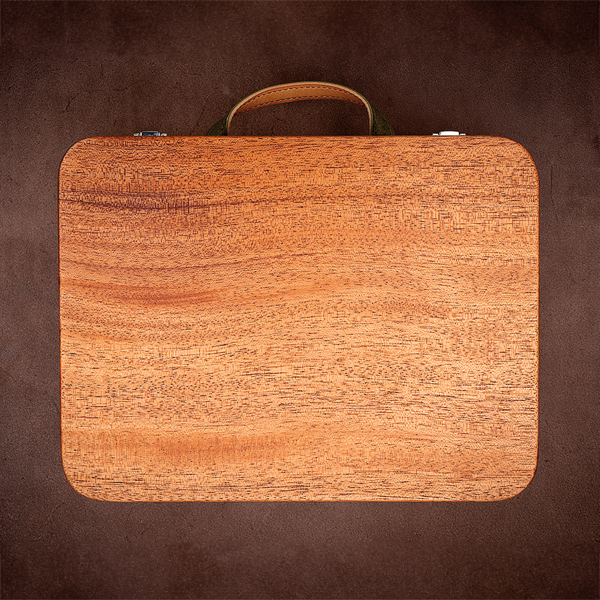
The Shesh Besh’s mahogany case. Photo by Brian Roedel.
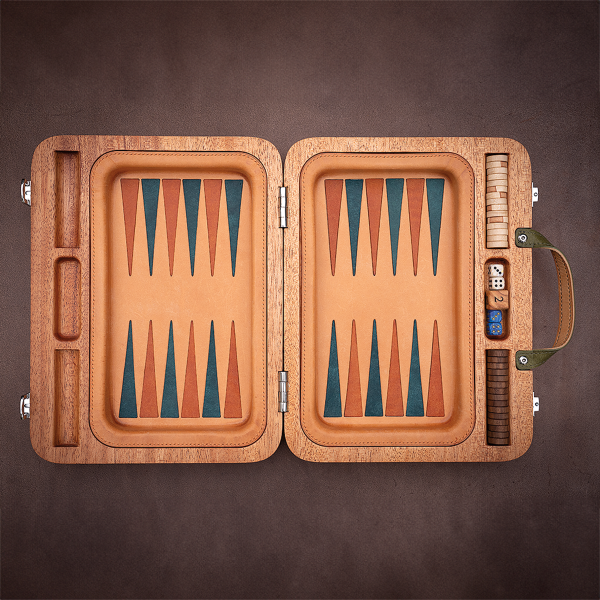
Available at Upstate Handmade, The Shesh Besh comes with handmade black walnut and birch checkers. Photo by Brian Roedel.
To gain design insights, Lepp and Roedel regularly visit backgammon clubs and meetups in Los Angeles. “Backgammon is back!” says Roedel. “It’s getting people together, getting strangers together to talk and meet in real life.”
crisloid.com
alexandrallewellyn.com
americanmadewoodart.com
upstatehandmade.com
I’m into making things that are not common. It’s extremely hard to make a solid wood backgammon board.
David Levy
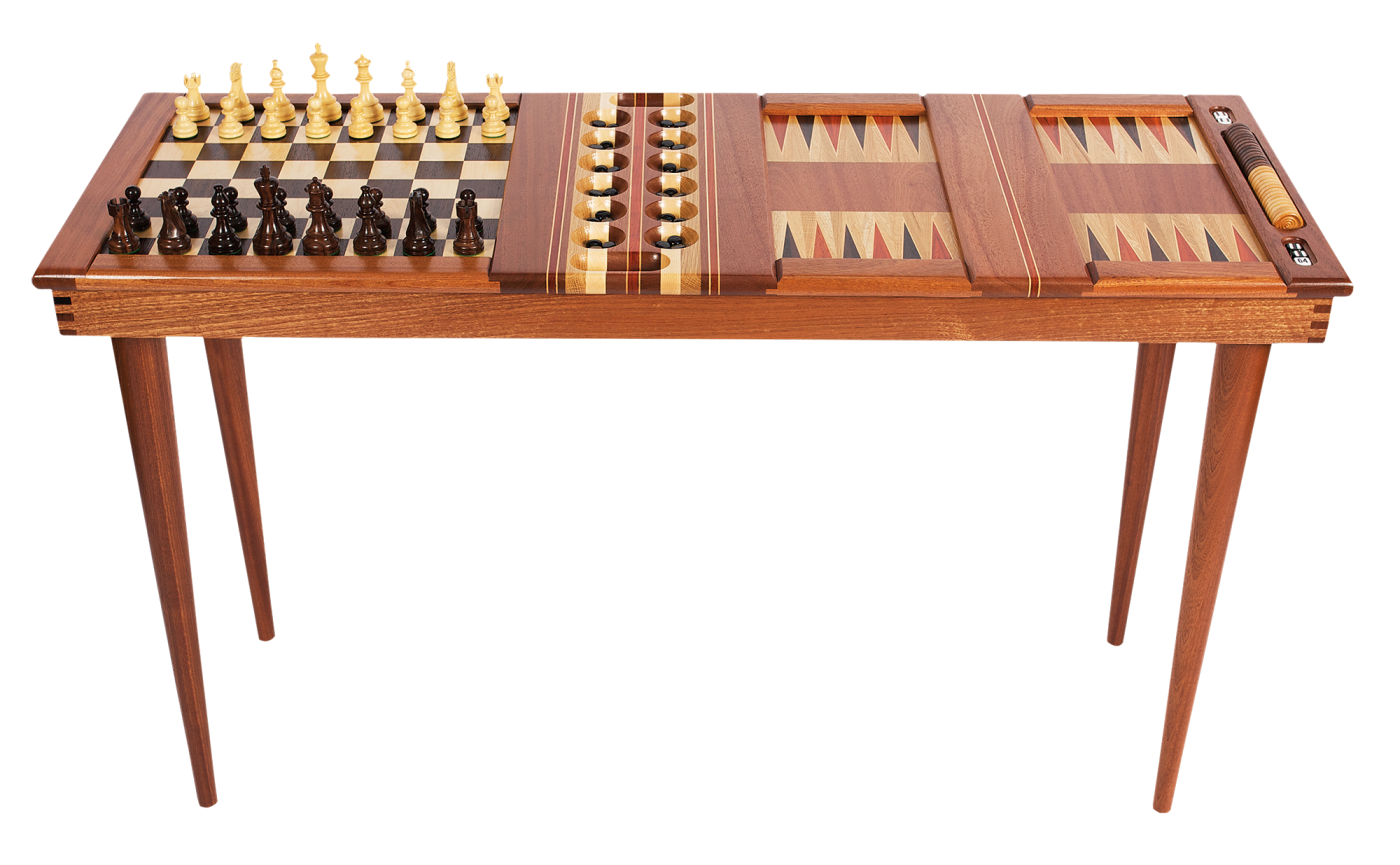
The backgammon board in David Levy’s Hardwood Game Table is made of Peruvian walnut, padauk, sapele, white oak, and maple. Photo by the artist.

